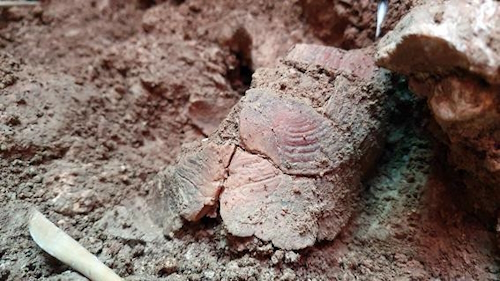
TESTUD’AUZ
Characterizing the origin of Hermann’s Tortoises at the Middle Paleolithic Site of Les Auzières (Vaucluse, Southeastern France): towards a better understanding of Neanderthal interactions with small prey?
Scientific responsibility :
- Camille Daujeard
- Jean-Baptiste Fourvel
- Nicolas Frerebeau
Methodological axes :
Thematic fields :
Disciplinary sectors :
Funding :
- DIM PAMIR
Project ID : IDF-DIM-PAMIR-2025-11-016
Summary :
The Middle Palaeolithic site of Les Auzières (Vaucluse, Southeastern France) is a small cave site yielding some layers with numerous faunal remains and lithic artefacts belonging to Neanderthal settlements. It also provides an exceptional collection of Hermann’s tortoise (Testudo hermanni) remains. This collection includes several hundreds of fragmented shells and a dozens of partially complete individuals. They have been mostly unearthed from a unique stratigraphic layer dated to c. 110,000 years before present (MIS 5). The archaeological context, marked by the presence of lithic artefacts, cut-marked faunal remains, charcoals and heated stones, raises the question of an anthropogenic origin of the tortoises. While their exploitation during the Middle Palaeolithic has been documented at few sites across the Mediterranean basin, the Auzières site stands out as unique for its exceptionally large assemblage, including some complete individuals. This remarkable concentration of tortoises raises questions regarding their origin, and their possible role in the subsistence strategies of Neanderthal groups. A preliminary analysis of a part of this assemblage (master 1 stage) revealed that most of these remains are still in a very good state of preservation. Shells are overrepresented with a high frequency of anatomical connections and a low overall fragmentation. A few heating, percussion and peeling marks were observed. This project aims to carry on the taphonomic and zooarchaeological analysis of the whole tortoise assemblage, with the aim of identifying the depositional and post-depositional processes (both anthropogenic and natural agents). It also intends to conduct an experimental protocol to assess the effects of cooking and fracturing on tortoise shells. Together, these approaches would represent a significant step towards a better understanding of Neanderthals interactions with small game in Southeastern France.
Legend: Hermann’s tortoise from the Middle Paleolithic site of Les Auzières (Vaucluse) during excavations
Intern : Marie Messiez

